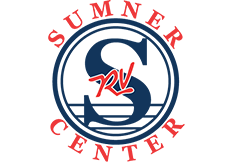How to Winterize Your RV

As the days get shorter and the mercury starts to drop, it becomes more important that RV owners take some steps to prepare their RVs for the winter. Even if you plan on occasionally using your RV through the winter, it’s no less important to winterize it. Below-freezing conditions can still cause water lines to freeze and burst, batteries can go dead, and animals seeking refuge from the cold can cause serious damage.
This short guide offers tips on how to winterize your RV so that it will stay in as good of shape as possible through the most demanding months of the year. For Washington residents, RV winterization is extremely important.
If you need professional help or RV maintenance, Sumner RV has locations in Sumner and Bremerton, Washington. We proudly serve the areas of Silverdale, Seattle, and Bremerton, Washington.
Interior
When it’s time to winterize your RV, the interior is a good place to start. First, remove all batteries from devices such as smoke alarms, propane alarms, flashlights, and anything else that has a dedicated battery. It’s helpful to have a place to store all your batteries, whether they’re brand new or are a little low on juice. That way, it will be easy to keep track of what you have and what you need to renew.
After that, defrost the freezer. If the refrigerator or freezer has an unpleasant odor, put in a box of baking powder with the top cut off. Open up all the cabinetry and remove everything from the cabinets. Inspect the cabinets to make sure there are no signs of mice or other vermin, and if you find any holes, fill them with expanding foam. Up here in Washington, there’s enough ambient humidity and moisture that it’s helpful to put a few dishes of desiccants around your trailer to keep mold from forming. Make sure to keep your cabinets open so that they don’t hold any excess humidity. Before locking up the interior, close the blinds and window shades.
Exterior
Outdoors, start with your tires. Make sure your tires are inflated to the manufacturer's recommendation so that the trailer settles evenly. It’s helpful to put chocks in front and behind your trailer to make sure that it can’t roll anywhere. Wheel covers are helpful for protecting the tires from ultraviolet light. After you’ve taken care of the tires, remove your RV’s main batteries. Store these indoors through the winter in a garage or basement where they can be kept off the ground in a relatively temperature-controlled area. Take a flashlight and examine the underside of the chassis. Look for any holes that might allow animals into your RV. Fill these with expanding foam. Finally, make sure the awning is clean and totally dry before rolling it back up for the winter.
Water Tanks
Anywhere water trapped in your RV through the winter will be at risk of freezing, expanding, and causing serious damage. Water lines can easily burst causing even more serious problems once the temperature drops and the water melts again. Winterizing your water system requires draining some pipes and storage tanks, while using an antifreeze solution in other areas. Some RV owners take care of this process on their own, but if you don’t have the time, you can bring your RV to a professional RV technician who can do the job quickly and correctly.
If you need parts, services, and maintenance for your RV, stop by Sumner RV. Our Sumner and Poulsbo, Washington locations proudly serve the areas of Silverdale, Seattle, Bremerton, Olympia, Kent, Renton, and Tacoma, Washington. Give us a call today or stop by to hear about all of our RV services!

